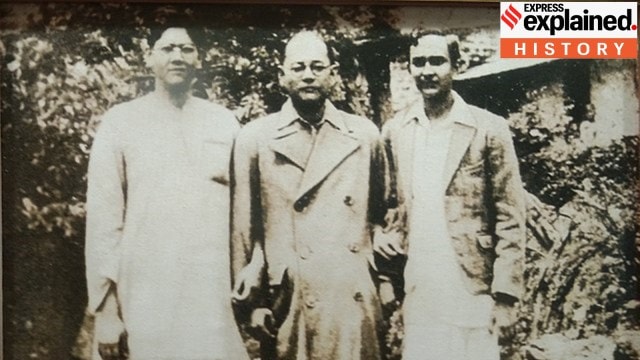An episode that is illustrative of many of Bose’s qualities — daring, resourcefulness, and the lengths he was prepared to go to for India’s independence — is of his escape to Germany from house arrest in Calcutta after World War II broke out.

Here’s the story of how Bose reached Berlin, from Calcutta to Gomoh to Peshawar to Kabul to Russia, changing identity thrice along the way.
July 1940: Bose is arrested
By July 1940, Bose had resigned from the Congress and launched his own party, Forward Bloc. Apart from his commitment to the cause of India’s freedom, Bose was also a staunch champion of Hindu-Muslim unity. Working for both these causes, he joined a movement demanding the removal of the Holwell Monument from Dalhousie Square in Calcutta.
This monument was in the memory of British prisoners of war who died allegedly due to the excesses of the army of Siraj ud-Daulah, the last independent Nawab of Bengal. John Zephaniah Holwell, an East India Company employee, had claimed that after the Nawab’s forces defeated the British in June 1756, a large number of prisoners of war were forced into a tiny room (‘black hole’) in Fort William, and more than a 100 died of suffocation. Bose and other nationalists believed this version to be exaggerated, and considered the monument an insult to the Nawab’s memory.
Once the movement for its removal was launched, the British gave in quickly. However, they used this as an excuse to arrest Bose, under the Defence of India Rules and on two counts of sedition.
Bose, however, had no intention of staying in jail when momentous developments were taking place in the world and could be used to India’s advantage. He launched a fast unto death, demanding his release. As the popular leader’s health worsened, the British released him, intending to arrest him once he got better.
Plans to escape begin
Story continues below this ad
On December 6, 1940, Bose returned to his heavily guarded house in Calcutta, with British spies slipping in and out. All correspondence to the house was being monitored. However, Bose, along with his nephew Sisir, began to plan ways to escape. Gradually, some more people were involved in the plan, including Mian Akbar Shah, the Forward Bloc’s provincial head of the North Western Frontier Province, who had travelled from Afghanistan to the Soviet Union in his youth. It was decided that Bose would travel to Peshawar as Muhammad Ziauddin, a North Indian Muslim gentleman, and from there to Kabul.
To deflect suspicion, in all his letters, Bose spoke about his future return to jail. He even wrote some post-dated letters that could be posted after his escape, to buy him more time to plan his next moves.
Soon after midnight on January 17, 1941, Bose and Sisir left the house, in the latter’s car. Historian Sugata Bose writes in his book His Majesty’s Opponent, “Subhas had changed into his disguise as “Muhammad Ziauddin.” Dressed in a long, brown, closed-collar coat, baggy shalwars, and a black fez, he wore the gold wire-rimmed glasses that he had stopped using more than a decade before.”
Sisir drove to his brother Asoke’s house near Dhanbad. From here, Asoke, his wife, Sisir, and ‘Muhammad Ziauddin’ drove to Gomoh station, where Ziauddin caught the train to Peshawar.
Crossing the border
Story continues below this ad
Once here, Bose was met by Mian Akbar Khan, who arranged his escape beyond the borders of the British empire into Afghanistan, via a car and a trek with the help of a tribal guide. Bose had changed into another disguise, that of a deaf-and-mute Pathan. The last bit was necessary as Bose did not speak Pashto, the local language.
Sugato Bose writes, “Bhagat Ram [an associate of Mian Akbar Khan], under the assumed name “Rahmat Khan,” would be taking his deaf-mute elder relative Ziauddin to the shrine at Adda Sharif, in an attempt to cure him of his affliction. Abad Khan taught Ziauddin how to drink water from a kandoli and partake of food from a common plate with his fellow Pathans. With a new set of clothes, complete with the local headgear, Subhas Chandra Bose fully looked the part but had to be careful not to utter a word.”
After crossing the border, Bose and his helpers managed to get to Kabul. Here, they had to spend some time of uncertainty and worry, as they tried to look for ways to travel to Europe or the Soviet Union, even as a livid British continued to look for Bose.
Bose eventually walked up to the German embassy and asked for help. The Italians, the Russians, and the Germans all helped Bose travel to Berlin via Russia. For this, a third identity was necessary — that of Orlando Mazzotta, an Italian diplomatic courier, whose actual passport Bose used to escape Kabul.
Story continues below this ad
Finally, on April 2, 1941, Bose managed to reach Berlin, crossing four countries and outwitting the most powerful empire in the world.








































